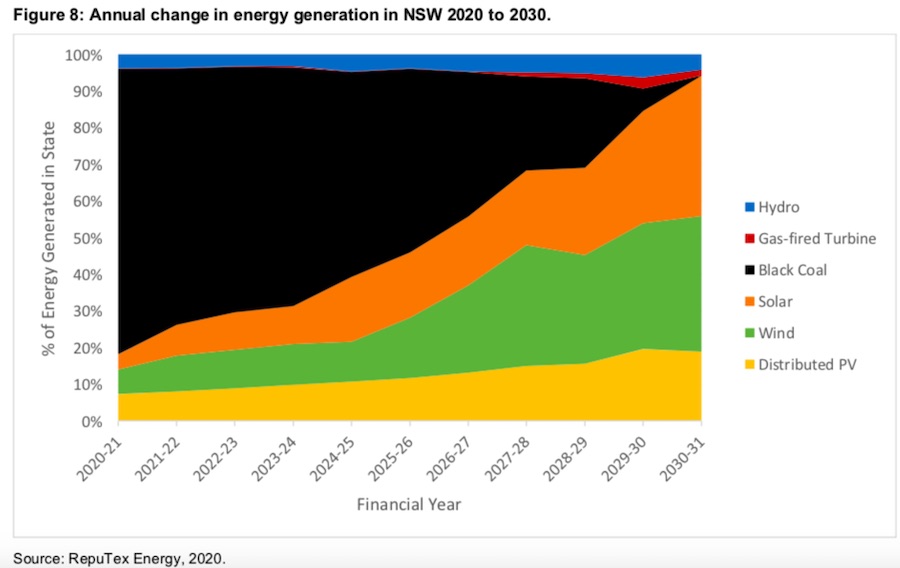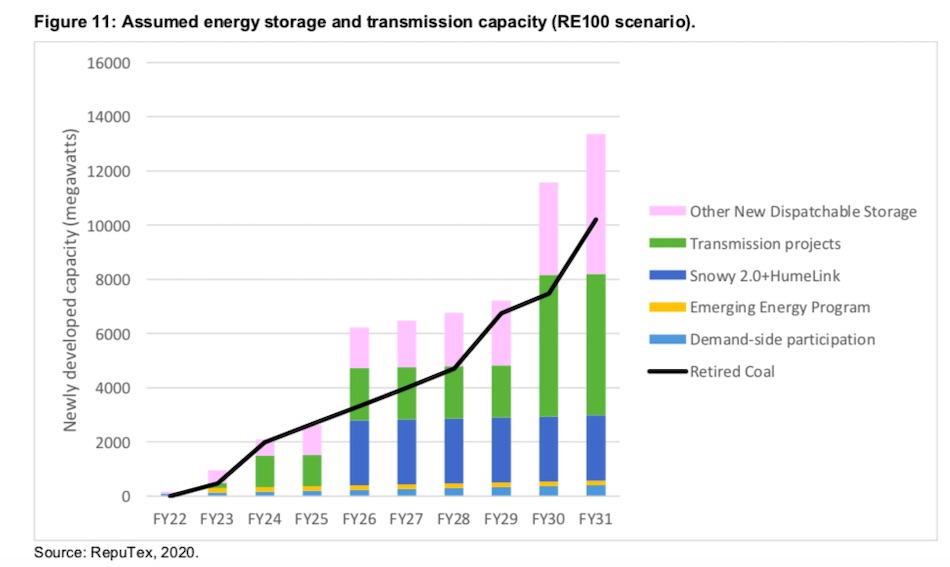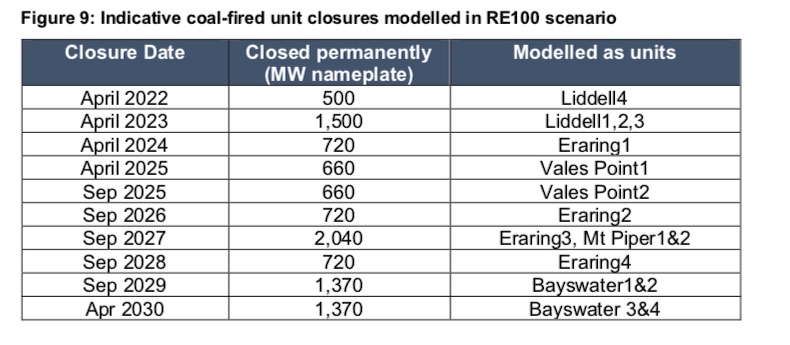New South Wales, the state with the biggest grid in Australia in terms of demand, and the heaviest reliance on coal power in the country, could reach 100 per cent renewable energy by 2030, according to a new report by Reputex.
The report from Reputex says reaching 100 per cent renewables in NSW in less than 10 years is ambitious, but it can be done. It will require the replacement of 10GW of coal generation with some 32GW of new wind, solar and storage capacity.
It will also require careful planning, new transmission lines and the creation of a number of renewable energy zones, and will also likely need new policy and investment settings such as a Clean Energy Target, an Energy Security Target, and a co-ordinated exit of coal-fired facilities.
The release of the report is particularly timely given the announcement of the early closure of Yallourn in Victoria, and predictions that other coal fired generators will soon follow, due to the massive changes in the market, the sustained fall in wholesale power prices and their inability to deal with the growing influence of rooftop solar.
And, of course, it comes in the light of the recent UN call for all rich countries, including Australia, to close down all coal generation by 2030 in order to try to meet 1.5°C targets.
NSW is already facing the closure of the last units at Liddell in 2023, and the likely closure of Vales Point in 2029, and Eraring, currently scheduled to close in 2032 but which analysts suggest will close earlier. That will leave only Mt Piper, struggling to secure a reliable coal supply, and Bayswater left in the state.
NSW energy minister Matt Kean has already announced an ambitious infrastructure roadmap to deal with the reality of the anticipated coal closures, including an auction system, support for storage, and the creation of at least four new renewable energy zones that he hopes will encourage 12GW of new capacity by 2030.
But the Reputex report, commissioned by the Nature Conservation Council which wants NSW – and other states – to adopt a more ambitious plan that complies with the 1.5°C target, suggests the new build requirement for NSW to replace all its coal power by 2030 will be nearly three times that currently envisaged.
“Under a 100 per cent renewable (RE100) scenario by 2030, NSW renewable energy generation must grow six-fold from about 12 terawatt-hours (TWh) in 2019-20, to approximately 72TWh by 2030-31,” the Reputex report says.
“This implies current variable renewable energy (VRE) capacity of around 8GW growing to roughly 32GW in 2030, including 18,000MW of large-scale wind and solar; and 6,000MW of distributed PV.”
“Energy storage grows by over 10,000 MW, including almost 8,000 MW of dispatchable storage including Snowy 2.0, and almost 3,000MW of behind the meter batteries.”
The Reputex report suggests this will result in lower wholesale prices than the business as usual scenario, mainly because a planned and co-ordinated exit will avoid unnecessary inefficient upgrades and the mess created by unplanned exits.
So, compared to “business as usual” wholesale prices averaging between $50 and $80 per MWh throughout the decade, under a RE100 scenario, short-term annual average wholesale electricity prices are forecast to oscillate as high as $60/MWh following the closure of Liddell coal-fired units in 2023, and as low as $47/MWh as transmission projects fully connect Snowy 2.0, expand the Queensland interconnection, and open a new REZ in New England.
The Reputex study suggests that at least one unit of Eraring will close in early 2024, and the remainder over a three year period from 2026 to 2028. Mt Piper’s closure is fast tracked to 2027, Vales Point to 2025, and the last units at Bayswater would close in early 2030.
Will the lights stay on? Report lead author Bret Harper says the storage is critically important, and there may end up being a need to retain some residual gas capacity for a few years, just in case of contingencies and if not enough storage is in place by 2030.
“The message is that it can be done,” he says. “It will be challenging …. and there are some unknown technical challenges to get through the last 5 per cent, but there is no reason to believe the solutions can’t be found.”
Nature Conservation Council CEO Chris Gambian says the report clearly shows that it is technically feasible to make the transition, and that it can be done without affecting power prices or reliability.
“As we have seen over the past few weeks, renewables have put huge downward pressure on electricity prices and the profitability of companies that run the coal-fired power stations,” he says. “That pressure will remain until the last coal station closes. It’s no longer a matter of whether this transition will occur, but how fast.”
But Gambian says the big missing piece for policy makers to date is a transition plan for coal communities like those at Lithgow, on the Central Coast and in the Hunter.
“Governments and the major political parties have completely failed these communities. They have told them fairytales of coal forever and failed to plan the real future that is coming faster than anyone imagined.














